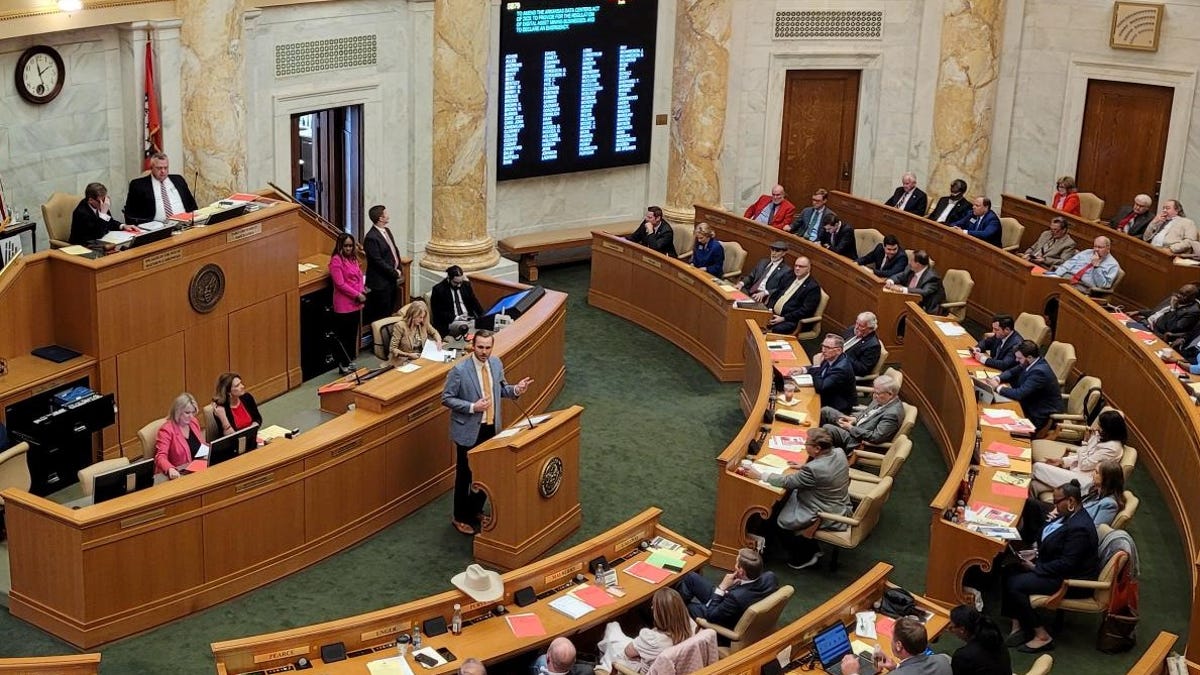Crypto
What is the Market Cap in Crypto?

Comprehensive Analysis: Understanding Market Cap in the Crypto
The worth of a cryptocurrency is frequently determined using the term “market cap.” At its essence, the term is simpler even though it may appear complex. What does it signify, and why is it essential? Let’s analyze it.
Identifying Market Capitalization
Fundamentally, market capitalization gives an overview of an asset’s entire market value. The same formula applies whether evaluating a cryptocurrency or a company’s value on the stock market:
Market Cap is calculated as follows: Current Asset Price x Total Assets in Circulation
When it comes to cryptocurrencies, this refers to:
A cryptocurrency’s market capitalization is equal to its current price times its total circulating supply.
Let’s use a fictitious scenario to clarify.
The market capitalization of a cryptocurrency called “CryptoCoin” would be €10 multiplied by the number of coins in circulation (€10 x 1,000,000 = €10,000,000) if CryptoCoin is selling at €10.
This indicates that €10 million is CryptoCoin’s market capitalization.
What Makes Market Cap Important?
Stability Indicator: A coin with a larger market capitalization is likely more widely accepted and is therefore seen as more mature and stable.
Risk assessment: It is a tool used by investors and traders to evaluate the risk-to-reward ratio. Higher market capitalization cryptocurrencies are often thought to be less hazardous than lower capitalization ones.
Liquidity Indicator: Coins with a larger market capitalization generally have more liquidity, which facilitates buying and selling.
Trend Analysis: Tracking shifts in market capitalization over time might reveal information about probable price fluctuations and the state of the market as a whole.
Cryptocurrency Market Capitalization:
Although the fundamental calculation is simple, there are complications to comprehending market capitalization in cryptocurrency.
Comparing Circulating vs Total Supply: Not every token can be exchanged for another. Some may be reserved, closed, or not available just yet. Therefore, we typically take into account the market cap’s circulating supply rather than its overall supply.
Market Cap Dominance: As of January 10, 2024, the ratio of the market capitalization of Bitcoin to the total market capitalization of cryptocurrencies was less than 50%. This indicates that Bitcoin’s influence over the whole cryptocurrency market has declined recently.
Volume and Market Cap: It’s critical to take market cap and trading volume into account. insufficient trading volume and a large market cap may be signs of insufficient liquidity, which makes it more difficult to buy or sell without changing the price.
Sorting Cryptocurrencies using Market Capitalization
It’s common to hear phrases like “Large Cap,” “Mid Cap,” and “Small Cap” in the cryptocurrency world. Their market capitalization serves as the basis for these divisions:
Large-Cap: Digital assets with a market valuation of more than US$10 billion. For instance, USDC, Tether (USDT), Ethereum (ETH), and Bitcoin (BTC). They are considered to be more trustworthy.
Mid-Cap: Digital assets with a market capitalization ranging from US$1 billion to US$10 billion. Litecoin (LTC), Cardano (ADA), Dogecoin (DOGE), and Polygon (MATIC) are a few examples. Large caps are less risky than these, but they may have greater upside potential.
Small-Cap: Digital assets having a market value of less than US$1 billion. Immutable X (IMX), Axie Infinity (AXS), and Aave (AAVE) are a few examples. They offer a chance for great returns but can also be more risky and erratic.
The Risks of Using Market Cap Exclusively:
Although market capitalization is a significant indicator, it can be deceptive to base investment decisions only on it. This is the reason why:
Market Volatility: The values and market capitalizations of cryptocurrencies can fluctuate quickly.
Price manipulation: Cryptos with smaller market capitalizations may be more vulnerable to it.
Neglecting Other Crucial Elements: Concentrating only on market capitalization may cause one to ignore other essential elements such as the project’s technological solutions, adoption rate, and level of competition.
Conclusion:
For traders, investors, and cryptocurrency fans, market capitalization is an essential instrument. Instead of serving as the only criterion for making decisions, it needs to be used in conjunction with other research instruments. Make sure you have a thorough understanding of the cryptocurrency field, bearing in mind that market capitalization is subject to sudden fluctuations due to the volatile nature of cryptocurrencies. It is imperative, as always, to conduct thorough research and confer with financial experts before to making any investment decisions.

Crypto
Cryptocurrency Price Analysis: SHIB, DOGE, and XRP Face Varied Challenges
Throughout much of the month, the majority of top assets maintained a sideways trajectory. While some experienced marginal upticks, others contended with declines. Let’s delve into the price analysis of Shiba Inu (SHIB), Dogecoin (DOGE), and Ripple (XRP). Shiba Inu (SHIB)Coin Edition’s evaluation of SHIB’s 4-hour chart revealed a bearish signal. Specifically, attention was drawn to the Exponential Moving Average (EMA), where the 20 EMA (yellow) crossed below the 9 EMA (blue)—a phenomenon known as a death cross. Moreover, SHIB’s price lingered beneath these indicators, signaling a diminishing strength for the token. Presently, there’s a prospect of SHIB’s price descending
Crypto
Bitcoin (BTC) User Paid Eye-Watering $100,254 for Single Transaction

A single Bitcoin BTCUSD transaction has caught the attention of many owing to its gas fee size. Blockchain analytics platform Whale Alert confirmed that a fee of 1.5 BTC was paid for a single transaction. This fee is equivalent to $100,254 based on the current market value of the top cryptocurrency. This fee is quite higher than the average transaction cost.
This user paid this enormous fee to have their transfer included in an ordinary Bitcoin block. Some of these transactions have been recorded in the past. In September 2023, a Bitcoin user paid a transaction fee of 19 BTC. This was around the time when Bitcoin price was trading at $26,000, hence, the 19 BTC was equivalent to $509,563.
Then again, in January, another BTC account paid over 4 BTC to have their transfer included in an ordinary Bitcoin block. The transaction was therefore charged with a whopping 1,800,890 sat/vB fee.
Potential reason for high transaction fee
Payment of such exorbitant fees usually raise suspicions as many market observers wonder the circumstances that could have led to it. At press time, Bitcoin’s average transaction fee was at a level of $4.696, up from $3.740 on May 4 and down from $6.696 one year ago. This is also a change of 25.57% from yesterday and -29.86% from one year ago, per data from YChart.
It is worth noting that ordinarily transaction fees can fluctuate due to network congestion. It once reached as high as $60 during the 2017 cryptocurrency boom. Hence, this outrageous transaction fee recently recorded could be a result of a mistake or a misconfiguration in transaction software. It could also be potentially for reasons known only to the transaction initiator or even a possible money laundering scheme.
Crypto
Stablecoin Tether steps up monitoring in bid to combat illicit finance

Tether, a cryptocurrency pegged to the U.S. dollar, and blockchain analytics company Chainalysis have launched new tools to identify transactions associated with sanctioned entities and analyse the activity of major holders of the token, Tether said.
Last month, Reuters reported that Venezuela’s state-run oil company PDVSA planned to increase use of Tether in its crude and fuel exports at a time when the U.S. has reimposed oil sanctions.
Crypto Tracker
The Wall Street Journal reported last month that Russian middlemen had used Tether to evade Western sanctions in order to source weapons parts for drones and other military equipment. Tether’s announcement did not mention either report. Asked by Reuters if Thursday’s announcement was related to the report about Venezuelan oil, a spokesperson for Tether said that its work to build a more powerful monitoring tool with Chainalysis had been “in the works for several months.” “Tether has been using Chainalysis data for several years, as the foundation for our investigation and compliance work. Also, Tether has clearly announced its compliance with OFAC/SDN list,” the spokesperson said in emailed comments, referring to the U.S. Treasury’s Office of Foreign Assets Control’s sanctions. Tether has previously said that every action with the cryptocurrency is online and traceable, and “every asset can be seized and every criminal can be caught.”
Tether has grown rapidly in recent years, hitting $100 billion in circulation in March. That growth has been driven by its use as an alternative to the dollar in emerging markets, Tether CEO Paolo Ardoino told Reuters last month.
Stablecoins can be used as a form of payment, as well as to convert in and out of other tokens, such as bitcoin, when trading on crypto exchanges.
Tether, which is registered in Hong Kong and owned by a company registered in the British Virgin Islands, is able to freeze its tokens and has previously said it has done so in response to requests from law enforcement.
-

 News1 week ago
News1 week agoLarry Webb’s deathbed confession solves 2000 cold case murder of Susan and Natasha Carter, 10, whose remains were found hours after he died
-

 News1 week ago
News1 week agoFirst cargo ship passes through new channel since Baltimore bridge collapse
-

 World1 week ago
World1 week agoHaiti Prime Minister Ariel Henry resigns, transitional council takes power
-

 World1 week ago
World1 week agoSpanish PM Pedro Sanchez suspends public duties to 'reflect'
-

 World1 week ago
World1 week agoUS secretly sent long-range ATACMS weapons to Ukraine
-

 News1 week ago
News1 week agoAmerican Airlines passenger alleges discrimination over use of first-class restroom
-

 Education1 week ago
Education1 week agoVideo: Johnson Condemns Pro-Palestinian Protests at Columbia University
-

 Movie Reviews1 week ago
Movie Reviews1 week agoAbigail Movie Review: When pirouettes turn perilous





















